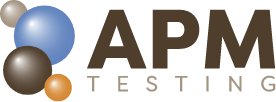ASTM B568
PLATING THICKNESS BY XRF TESTING SERVICES
Purpose: Non-destructively measure the thickness of a metallic plating.
Sample: One plated area 0.010 inches (0.25 mm) in diameter or larger.
Basic Description: ASTM B568 X-Ray Fluorescence (XRF) is a non-destructive method of measuring plating/coating thickness by using an X-ray beam to excite the surface of a sample and then calculating the intensity of the energy returned by the plating versus the base material. Each element emits energy at a different wavelength so the plating and base material show separate peaks in the XRF spectrum. An increase in plating/coating thickness results in a larger peak from the plating material and a smaller peak from the base material. Coatings that are non-metallic or very thick are better measured in cross section by optical microscopy (ASTM B 487) or scanning electron microscopy (ASTM B748). ASTM B568 XRF analysis allows accurate plating thickness measurements down to one micro-inch (0.03 micrometer). This method is frequently used to measure gold, platinum, nickel, or zinc thicknesses over metallic substrates, useful in the jewelry and circuit board industries for quality control. Results are reported in a table with five or more readings per sample.
Limitations: Standards of known thickness are required to generate a calibration curve for each plating and base material combination. Cannot measure elements with an atomic weight less than that of calcium. A minimum area of 0.010 inches (0.25 mm) in diameter is required for accurate measurements.
Equipment: Fischer XAN Series XRF, Fischer XDVM Series XRF
Method Publisher: https://www.astm.org/b0568-98r21.html
Keywords:
- Plating Thickness
- Gold Plating Thickness
- Nickel Plating Thickness
- Platinum Plating Thickness
- Metallic Coating Thickness
- Zinc Plating Thickness
- XRF Analysis
- X-Ray Fluorescence
Related Test Methods:
